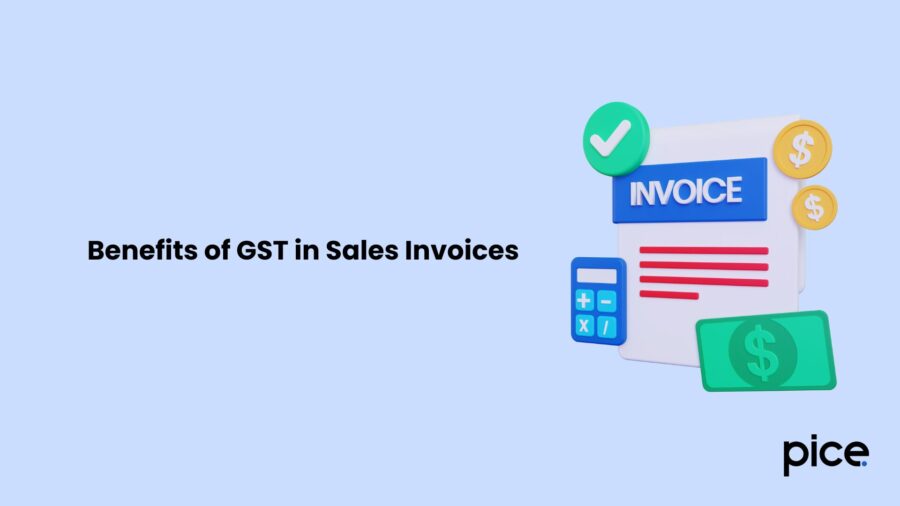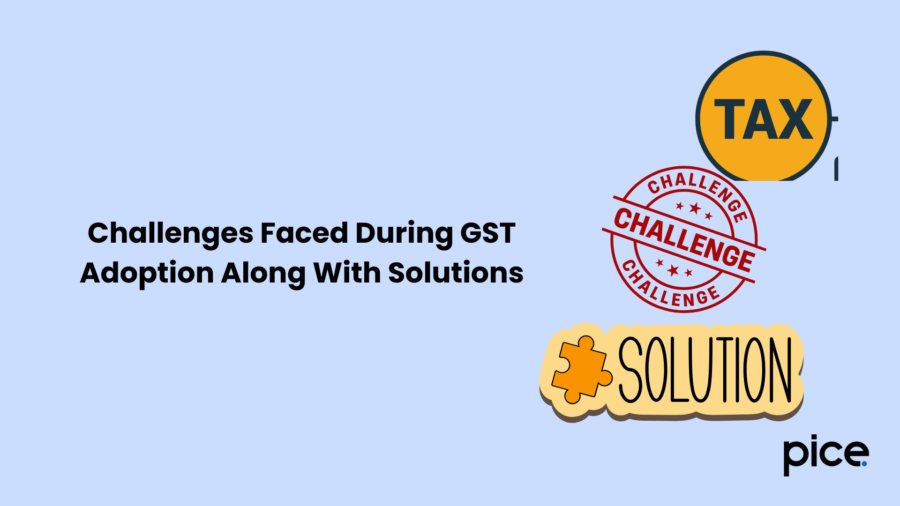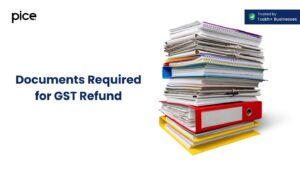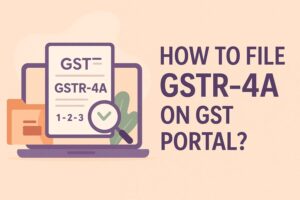Impact of GST on Sales and Marketing
- 25 Jun 25
- 10 mins

Impact of GST on Sales and Marketing
- GST and Its Impact on Sales Invoicing
- Benefits of GST in Sales Invoices
- Simplification of Invoicing Processes under Goods and Services Tax
- What is The Role of GSTN?
- Compliance Requirements in GST Invoicing
- Impact on Business and Economy
- Challenges Faced During GST Adoption Along With Solutions
- Future of GST and Invoicing
- Conclusion
Key Takeaways
- GST has unified various indirect taxes into a single system, simplifying compliance and reducing cascading tax effects.
- Accurate GST invoicing enables businesses to claim input tax credits, thus reducing their overall tax burden.
- The GSTN platform facilitates seamless tax return filing and real-time invoice tracking, enhancing transparency.
- E-invoicing under GST improves automation, tax monitoring, and regulatory compliance for businesses.
- Despite initial adoption challenges, GST has paved the way for a streamlined, tech-driven, and growth-oriented taxation framework.
The introduction of GST is significant as it replaces multiple types of indirect taxes and acts as a single unified type of indirect tax, such as VAT, excise duty, and more. People pay these taxes at the time of production and sales. As a major change in the whole taxation system, GST has many positive and negative implications for sales around the world, be it B2B or B2C, capital goods or high-sea sales.
In this blog, we will discuss and understand the GST impact on sales invoices, including the benefits it has provided and its overall role.
GST and Its Impact on Sales Invoicing
GST, or Goods and Services Tax, is a tax that our government imposes on the taxable supply of goods and services. The introduction of GST has replaced the multiple indirect taxes that were the central taxation system before GST. Some of the taxes that GST has replaced are VAT, excise duty, service tax, etc.
GST is a vast topic as it prevails in India's overall economy. Here is a list of some of its concept-defining features:
- Multiple Stages: Any material goes through various stages in the chain of supply of capital goods. This starts with purchasing raw materials and ends with the final sale to the customers, post-processing.
- Value Addition: Every time a product goes down the supply chain, a certain level of value is added to it, changing its utility. For example, a baker buys flour, sugar, and other raw materials and makes cookies out of them.
- Final Destination: The cost of goods and services is levied at the point of consumption. This means that if a product is sent to West Bengal for final consumption, then GST payable will be levied on West Bengal at the time of sale.
GST streamlined the structure of indirect taxes in India and made it simpler to comply with. This reduced the cascading effect and enabled more competitive pricing. This stimulated demand in the market, ultimately showing a positive impact on sales.
Benefits of GST in Sales Invoices

GST has brought significant tax reforms compared to the previous tax regime, including varied differences in GST rates. These reforms also have various benefits when creating and utilising GST sales invoices. Here is a list of the positive GST impact on sales invoices.
- Unitary Source of Information: GST tax invoices are a single source of information for all transactions. This helps with simplified tracking and management of tax due on every sale. People can be aware of their due amount and pay their taxes within the due time.
- Cost Saving: Having a single source of all tax information is a cost saver for businesses and helps them meet their business objectives. They do not have to make separate paperwork for every type of indirect tax coming their way, which saves time and money.
- Input Tax Credit: Businesses can claim input tax credit while making business-related purchases and save some taxes, ultimately making the product more cost-efficient.
- E-Invoicing: Many countries Implement E-Invoicing. This has a positive impact on both people and the government, as people can utilise automatic tax calculations, and the government can monitor taxes in real-time.
Simplification of Invoicing Processes under Goods and Services Tax
GST has brought a unified model of indirect taxes, which is way simpler than the previous tax regime with multiple different taxes. Here is a list of facts that prove the simplicity and organised structure of GST.
- GST enables businesses to determine and state the exact GST rates and the respective taxable amounts on various products and services.
- The removal of the cascading effect simplifies the tax calculation process.
- With input tax credit, businesses can deduct their GST tax rate payable on inputs from the output taxes that they owe.
- Providing a personal GSTIN to every company helps in easier tax monitoring and identification.
All in all, the transition of electronic invoicing from the regional tax rate has been crucial in making the taxation process less hectic and promoting transparency and compliance in tax processing, ultimately having a good GST impact on sales invoices.
What is The Role of GSTN?

GSTIN, or Goods and Services Tax Network, is a digital infrastructure that helps taxpayers comply with various GST-related tasks online. It acts as a channel between taxpayers and GST authorities. Here is a list of roles of GSTIN:
- GSTIN is a unified platform that allows taxpayers to file their taxes online.
- GSTIN helps in the administration of GST legislation. It enhances the government’s ability to monitor and collect the right amount of taxes.
- GSTN acts as a safe platform for companies to evaluate and collect the right amount of GST
- Moreover, businesses can get information regarding their compliance requirements while filing for their GST returns.
Compliance Requirements in GST Invoicing
Businesses must mandatorily produce GST compliant invoices for their sales transactions. This is important for adhering to regulatory obligations and obtaining input credit and other benefits. Here is a list of regulatory requirements for GST tax invoices.
- The invoices must have the GSTIN numbers of both the recipient and supplier parties.
- Have the correct invoices and other relevant documents to ensure your claim for Input tax credit.
- Businesses must have readily available documents such as invoices, supporting documents and other records up to a specific time, as tax authorities may audit these data.
- A business must submit all required invoices, including those having outbound supplies and summary returns.
Impact on Business and Economy
For businesses, one of the most significant impacts has been the streamlining of indirect taxation. Instead of navigating varied state-specific tax laws, companies now adhere to a more uniform structure across India. This simplification, coupled with the removal of inter-state check posts, has significantly reduced logistics costs and transit times, fostering easier movement of goods.
The Input Tax Credit (ITC) mechanism is central to GST's design, allowing businesses to claim credit for taxes paid on inputs. Accurate GST invoicing is absolutely critical here, as it serves as the primary document for claiming ITC, thereby reducing the effective tax burden and avoiding the 'tax on tax' scenario prevalent earlier.
However, the transition also brought challenges. Businesses, especially SMEs, faced initial hurdles related to understanding the new system, adapting IT infrastructure for GST compliance (including generating compliant invoices and e-invoicing), and managing regular return filings. The stringent compliance requirements, while promoting transparency, increased the administrative load for many.
On the macroeconomic front, GST aims to enhance transparency, curb tax evasion, and widen the tax base by bringing more businesses into the formal economy. The unified market structure is expected to improve competitiveness and efficiency, contributing positively to GDP growth in the long run.
While initial inflationary pressures and implementation adjustments were noted, the overarching goal remains to create a simpler, more transparent, and business-friendly indirect tax regime that boosts economic activity nationwide. Effective GST invoicing practices are the bedrock upon which businesses can leverage the benefits and navigate the compliance demands of this transformative tax system.
Challenges Faced During GST Adoption Along With Solutions

The transition from the previous tax structure to the GST was a big step, and many businesses faced challenges adhering to these challenges. Here is a list of some of those challenges.
- Many companies faced obstacles relating to technological readiness and confusion with a completely new tax regime.
- Confusion regarding tax structure and resistance to change were other challenges faced by companies.
- The government had to conduct awareness programs and training sessions around the country to teach various GST tax obligations to teach businesses about GST.
- Making GST invoices requires technological support and invoicing software to make error-free invoices.
Future of GST and Invoicing
GST has evolved over the years and seems to have a bright future. However, a few things can leave a positive GST impact on sales return and sales invoices. Here is a list of them.
- Optimising the GST portal and website will make compliance more efficient.
- Technological developments and utilising modern features to complete GST tasks will make it more hassle-free.
- Making the online portal more user-friendly will significantly improve tax compliance.
Conclusion
Overall, GST has brought about a paradigm shift in the way businesses handle sales invoicing by streamlining tax processes, reducing compliance burdens, and promoting transparency. While the initial transition posed challenges, the long-term benefits of a unified tax structure, accurate invoicing, and efficient input tax credit mechanisms have made GST a valuable reform.
As businesses adapt to the digital infrastructure and e-invoicing systems, they can expect greater ease in operations and improved tax compliance. With ongoing technological enhancements and policy refinements, GST invoicing will continue to play a vital role in simplifying tax administration and supporting India’s economic growth.
💡If you want to streamline your invoices and make payments via credit or debit card or UPI, consider using the PICE App. Explore the PICE App today and take your business to new heights.


















